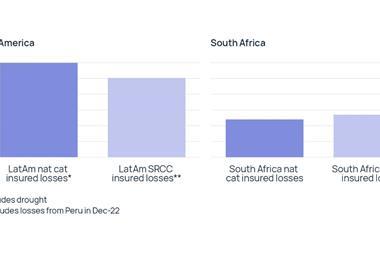The rise of IS, the ‘law of unintended consequences’

Although it is true that the events of the Arab Spring have changed the Middle East and North Africa (MENA) region, it is perhaps more accurate to say that the process is still ongoing, since so much is still in flux.
“The Arab Spring has unleashed a lot of uncertainty that [some areas are] struggling to absorb, either economically or politically,” says Anthony Skinner, director and head of MENA at Verisk Maplecroft.
Just as some historians have argued that the second world war ended only in 1989 with the collapse of the USSR, so it is impossible to know at this stage what the full impact of the political upheavals of the past five years will be or where they may yet lead.
Legacy of uncertainty
The most significant legacy of the post-2010 upheavals is uncertainty. In many instances, this has resulted in the creation of a political and security vacuum that is being filled by unpredictable, difficult-to-control and often violent extremists.
“The decline of the state structure in countries such as Libya and Syria has meant a number of non-state actors have been able to tap into weapons and other resources, and then use them to pursue their own agenda,” comments Skinner.
Falling oil prices have only added to the political uncertainty. Topping the list of political risks currently facing emerging-market investors is the increasing instability in already-fragile oil-producing countries such as Iran, Iraq and Libya, according to analysis by Aon Risk Solutions.
“Libya has become a base not only for Islamist groups at home, but as a launching pad for groups sending fighters to neighbouring states,” says Skinner.
The rise of IS
The single most significant new force to emerge in recent years marches under the black flag of the Islamic State (IS) and the rise of this group is a powerful reminder of how the ‘law of unintended consequences’ is increasingly shaping events across the region.
IS emerged from a loose alliance of forces opposed to president Bashar al-Assad’s rule in Syria. The West now finds itself propping up the same regime it discussed taking potential military strikes against only two years ago, considering it the lesser of two evils.
Despite coalition airstrikes and the best efforts of the Iraqi army and the Kurdish Peshmurga, IS remains in control of a significant area across Iraq and Syria, which includes access to immense financial reserves and manpower.
“IS in Syria and Iraq is incredibly robust and the resources needed to eliminate this group are considerable,” says Jonathan Wood, associate director, Global Risk Analysis, Control Risks.
He adds: “There isn’t the presence of a single, cohesive force that could do so and the groups that are currently keeping IS in check, such as the Kurdish Peshmurga, have their own internal divisions.”
While this situation persists, IS is having a galvanising effect on Islamists across the region and the wider world, potentially acting as an inspiration for terrorist attacks in countries from Canada to Europe.
Not only does IS make its presence felt through brutal at-tacks in urban centres – such as the March assault on the Bardo Museum in Tunis, which killed 21 people, including 18 tourists – it is also increasingly making full use of its ability to attack targets online many hundreds of kilometers from its headquarters in Raqqa, Syria.
Downloads
Special report
PDF, Size 2.77 mb




















No comments yet